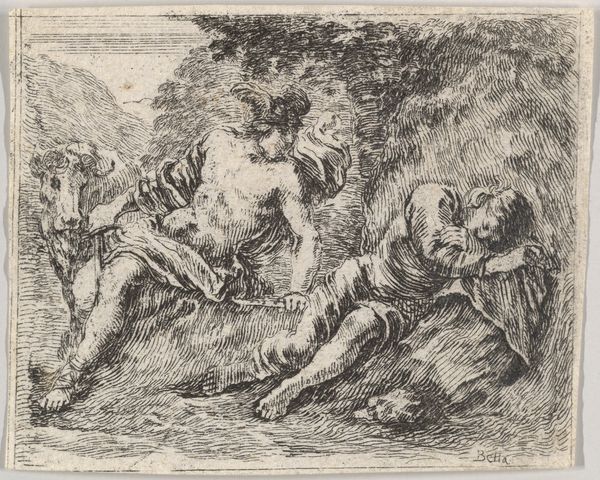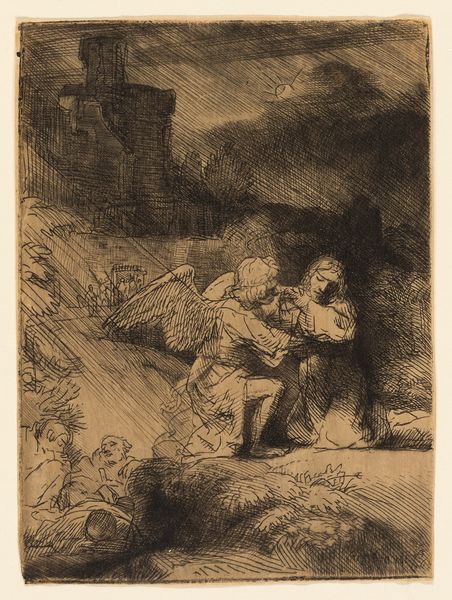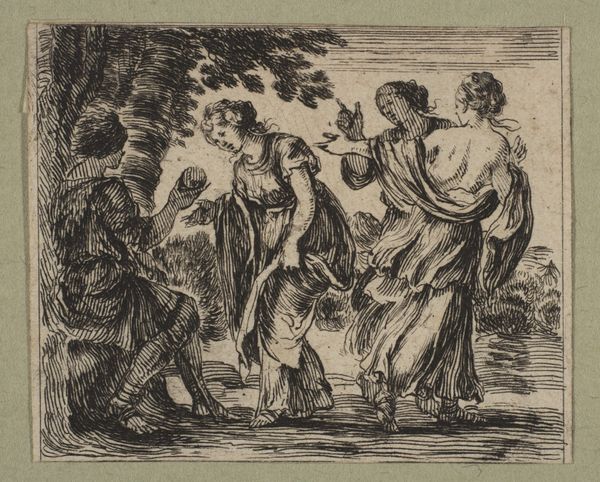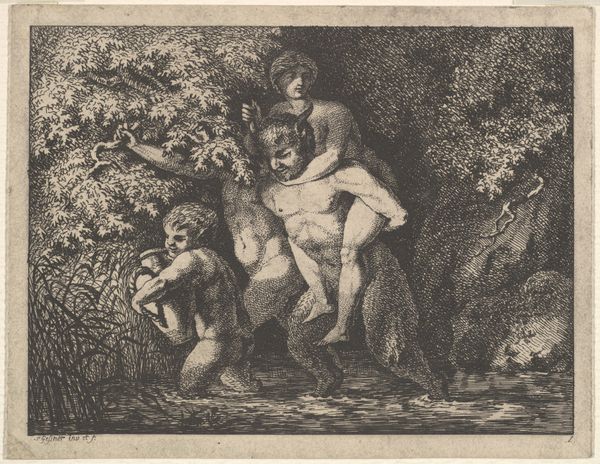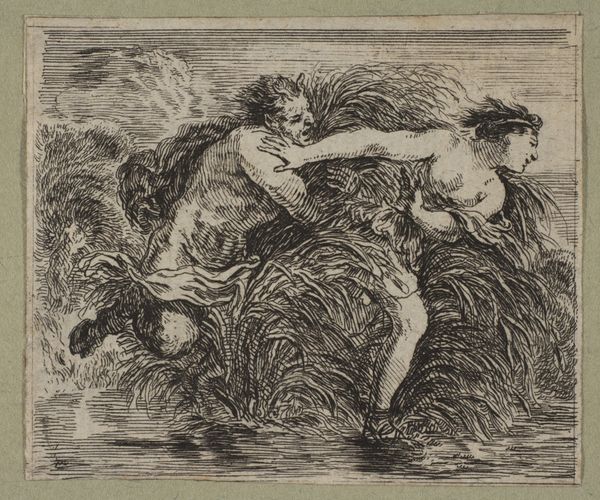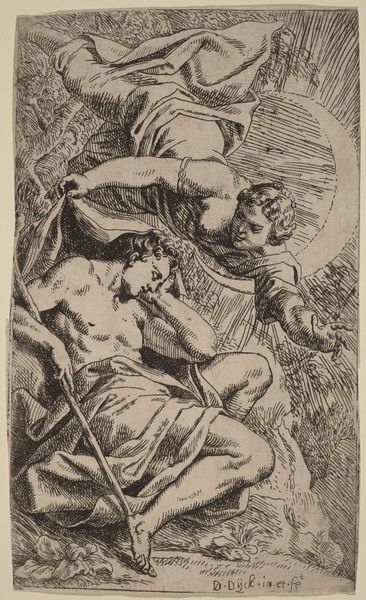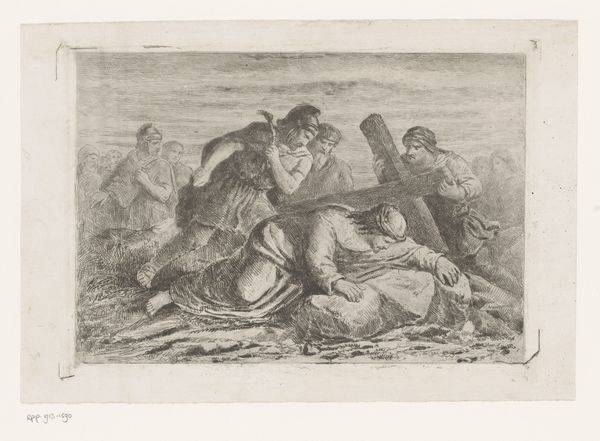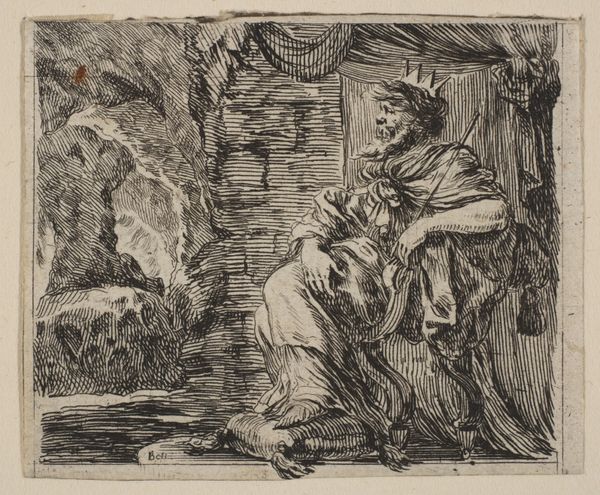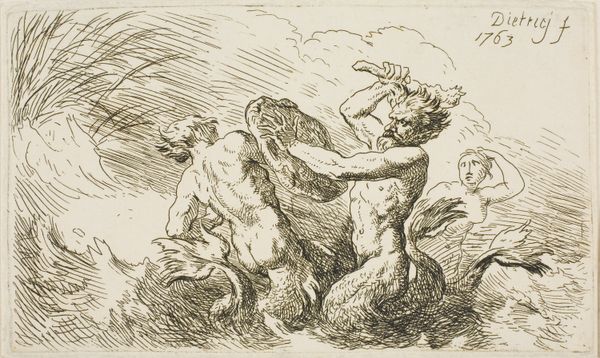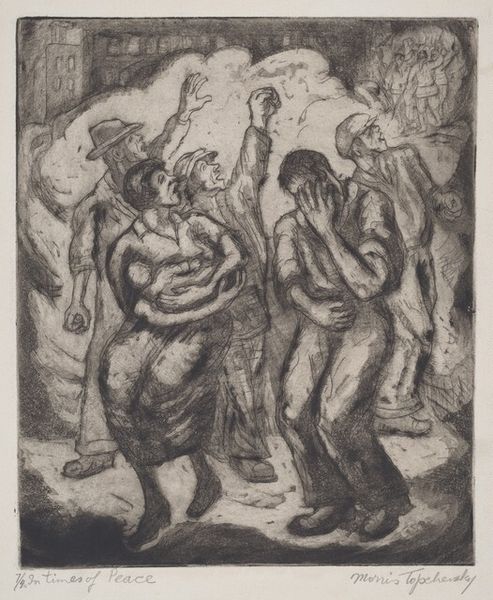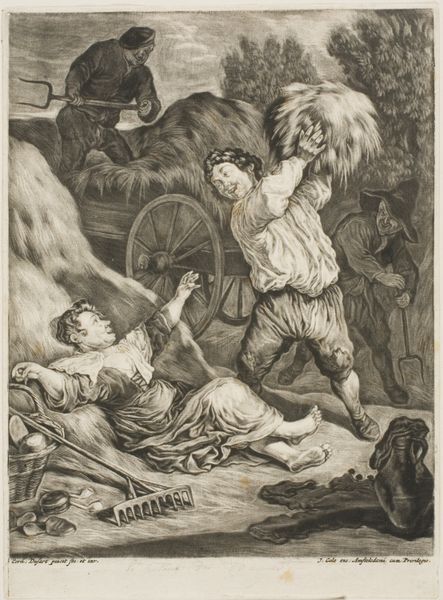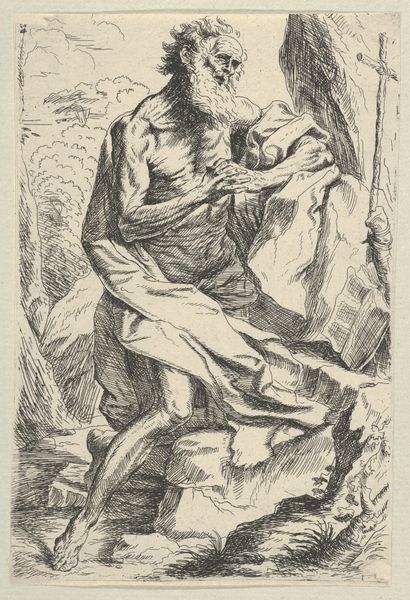
drawing, print, etching, engraving
#
drawing
#
narrative-art
#
baroque
# print
#
etching
#
figuration
#
history-painting
#
engraving
Copyright: Public Domain
Curator: Here we have "Orphée et Eurydice" a print by Stefano della Bella created in 1644. It currently resides in the collection of the Metropolitan Museum of Art. Editor: Immediately, I'm struck by the frantic energy. The etching's lines are so tight, creating a palpable sense of anxiety and haste, don't you think? Curator: Precisely. Della Bella, deeply entrenched in the Baroque style, often captured dramatic narratives. Consider how the figures are rendered, almost violently emerging from the darkness. The scene depicts the classic myth where Orpheus leads Eurydice from the Underworld. Editor: And the conditions of her release – the dreadful gaze back! The rendering amplifies the injustice, even the patriarchy baked into that fatal look. Is Eurydice's fate simply the result of a loving but flawed Orpheus, or does it tell of something deeper, about power and agency denied to women in storytelling? Curator: A pertinent point, certainly. It’s also vital to place this work within the socio-political framework of 17th-century Europe. Visual culture reinforced prevailing ideas around gender, social hierarchies, and political power. The artist isn't working in a vacuum. Della Bella operated within courtly circles, influenced by commissions and the expectations of his patrons. Editor: Absolutely, that network of patronage! How did that influence even a mythological story? And did it reflect the concerns and agendas of those in power? After all, myths, particularly well-known ones such as this, were continually reimagined. Curator: You can't divorce art from those influential currents. Look at the theatricality! The drama! All hallmark traits appreciated during the Baroque period, heavily shaped by the tastes of its era. This speaks to how narrative painting was intended to be perceived by the informed viewers of that moment. Editor: Exactly. Thinking of viewership… it begs the question: Whose story gets to be told? What underlying assumptions frame how these archetypes were represented – not only for their contemporaries, but how those representations continue to influence us today? Curator: Thinking about its impact over the centuries brings such pieces to life, as we reconsider their position. I hope visitors reflect not just on Orpheus' loss, but also consider how stories like this persist. Editor: I agree. We need these continual re-examinations to understand not just art’s place in history, but also how the narratives continue shaping our present.
Comments
No comments
Be the first to comment and join the conversation on the ultimate creative platform.

